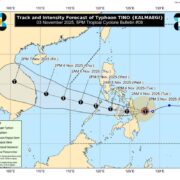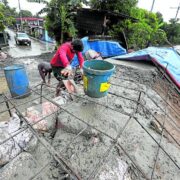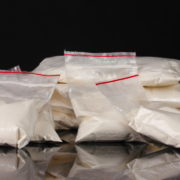The Philippines 800 years ago

Preparing column topics for the year entails looking over significant historical milestones for 2025. Offhand, it is the 80th anniversary of the end of World War II. In the Philippines, one can focus on the 1945 Battle for Manila that a previous generation referred to as the “liberation” from the awful and terrifying years of the Japanese Occupation. It was the late Carmen Guerrero Nakpil, as chair of the Manila Heritage and Historical Commission, who insisted on a different angle because the so-called “liberation” to some came at the cost of untold suffering when the Japanese cornered in Manila went on a killing spree. Taking no prisoners but murdering, raping, and torturing non-combatants that included women, children, the old, and infirm. History is never innocent, it is not only about historical facts but how those facts are remembered.
Another milestone is the 150th birth anniversary of Gregoria de Jesus Nakpil, the “Lakambini” or muse of the Katipunan. Her first husband was Andres Bonifacio, “Maypagasa” (There is Hope), leader of the Katipunan. After his death, she remarried Julio Nakpil, one of Bonifacio’s trusted men, who also was one of the prominent musical composers during the Philippine Revolution and the early 20th century.
The oldest milestone this year is the 800th anniversary of the publication of a 13th-century travel account of the world known through Chinese traders. Written by a certain “Zhao Rukuo” (also known as “Zhao Rugua” or “Chai Ju-kua”). The ”Zhufan zhi,” used to be known from its earliest English translation as “Description of the Barbarous Peoples,” but has been retranslated and annotated by Shao-yun Yang as “A Chinese Gazetteer of Foreign Lands.” Since ancient Chinese is not part of my skill set, I have been dependent for the past four decades on the 1911 English translation from the original Chinese by Hirth and Rockhill and I am happy to see that the old text has not just been given a new lease on life in a new translation, but using new scholarship and maps, certain mistakes have been corrected. There are over 60 places described in the text and the ones that concern us are “Mayi” that was previously believed to be Mindoro but can also be part of “Bai” in Laguna. The chronicler also references “The Three Islands” said to be present-day Palawan and the Calamian Islands as well as “Pulilu” that has been identified as Polillo.
Zhao says that from his perch lay “beyond the sea, tens of thousands of countries ringing the edge of the ocean.” He then described, “their precious and exotic products, such as southern gold, ivory, rhinoceros horn, pearls, aromatics, and tortoise shell.”
“The country of Mayi is to the north of Boni [Borneo]. More than a thousand families live in a single settlement on both sides of a river.” On this, the earliest translators located Mayi in Mindoro, then it has been suggested that Mayi could be Bai in Laguna or even the Verde Islands passage between Mindoro and Luzon.
The text continues: “The local people wear either a sheet of cotton cloth like a cloak, or just a cotton loincloth. There are bronze statues of the Buddha scattered in fields of grass, but no one knows where they are from.” We are still looking for archeological evidence to validate this observation.
“There are few bandits in this country. Upon arriving at its shores, a merchant ship will enter its harbor and moor in front of the official marketplace, where all trade in this country takes place. The local people board the ship and mix freely with the crew. The chiefs here use white parasols daily, so merchants always present such parasols to them as parting gifts. Trading starts with the barbarian merchants coming in large groups and carrying the goods away on bamboo rafts (pili).” In the previous English translation “pili” was rendered wrongly as “carrying baskets.”
What I find fascinating in this account is the trust that the Chinese traders placed on the natives they encountered in the islands:
“Initially, the Chinese merchants do not understand what is going on, and only gradually do they come to recognize the faces of the men carrying the goods. Yet there is never any loss of goods through theft. The barbarian merchants take the goods to other islands and sell them; they usually return after about eight or nine months and pay the ship merchants their share of the profit. Some return later than expected, and that is why ships that go to Mayi to trade take the longest to come back.”
Imagine they left their goods on credit and came back months later for the payment. Is such honesty still possible in 2025?
“Vassal states of this country include: the Three Islands (Palawan and the Calamian Islands), Baipuyan (Babuyan Islands), Pulilu (Pollilo Island), Liyin (possibly Lingayen Gulf), Dong (East) Liuxin (possibly southeastern Luzon including the Bicol Peninsula), and Lihan (possibly Lian, Batangas rather than Lubang as previously believed. “
These Chinese texts antedate Magellan’s arrival in 1521, they can provide context in our present territorial dispute with China.
—————-
Comments are welcome at aocampo@ateneo.edu
Ambeth is a Public Historian whose research covers 19th century Philippines: its art, culture, and the people who figure in the birth of the nation. Professor and former Chair, Department of History, Ateneo de Manila University, he writes a widely-read editorial page column for the Philippine Daily Inquirer, and has published over 30 books—the most recent being: Martial Law: Looking Back 15 (Anvil, 2021) and Yaman: History and Heritage in Philippine Money (Bangko Sentral ng Pilipinas, 2021).


















